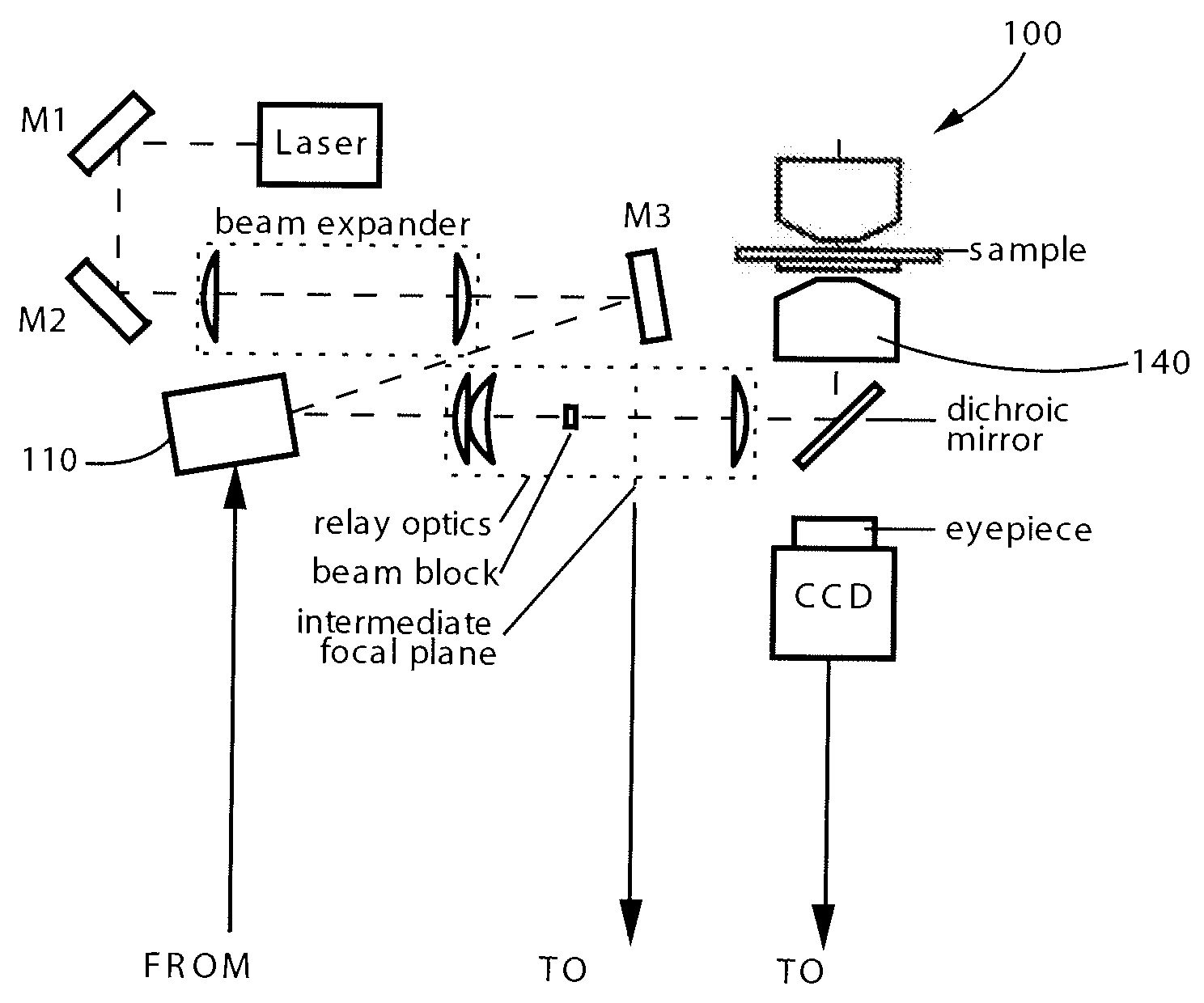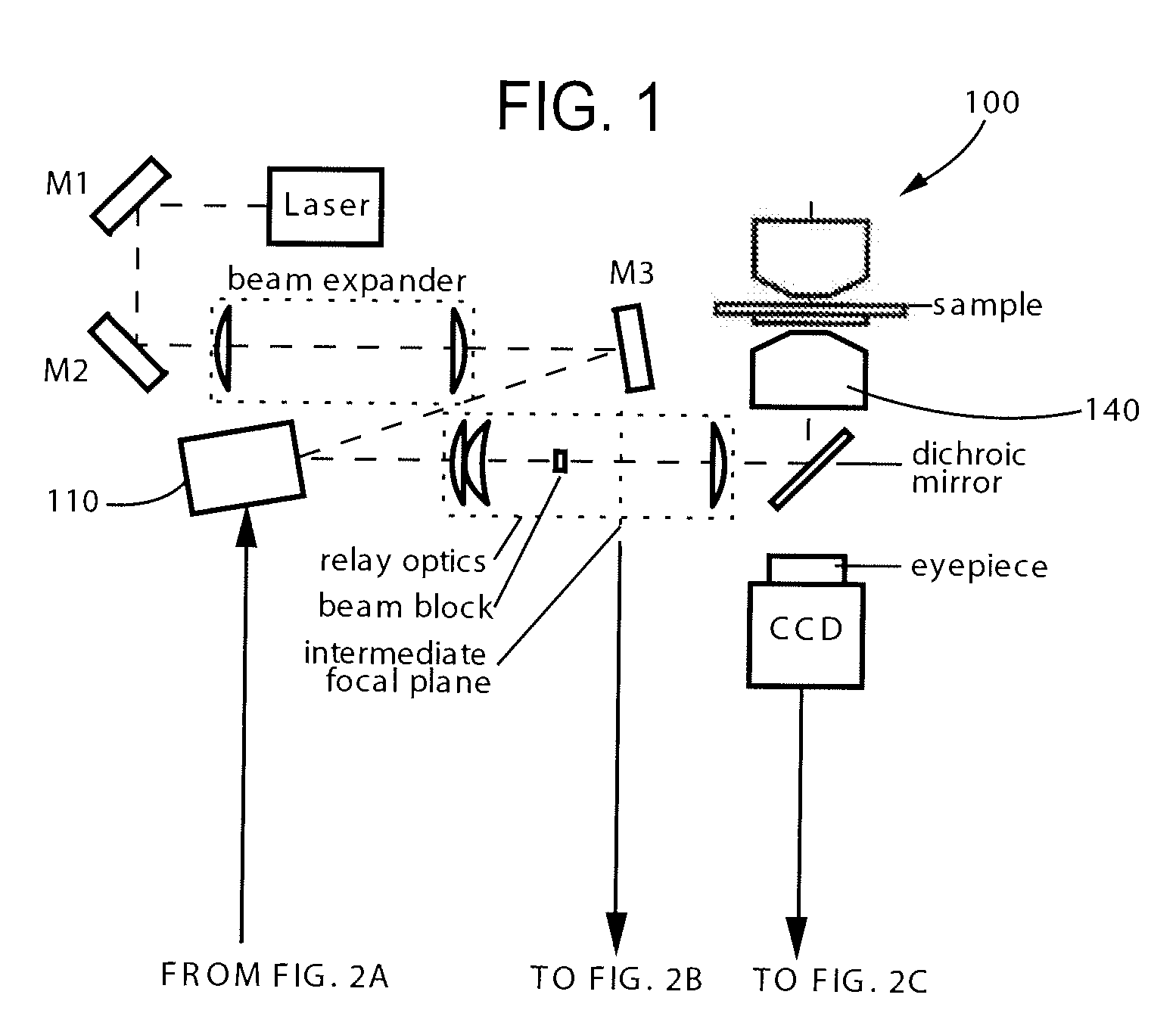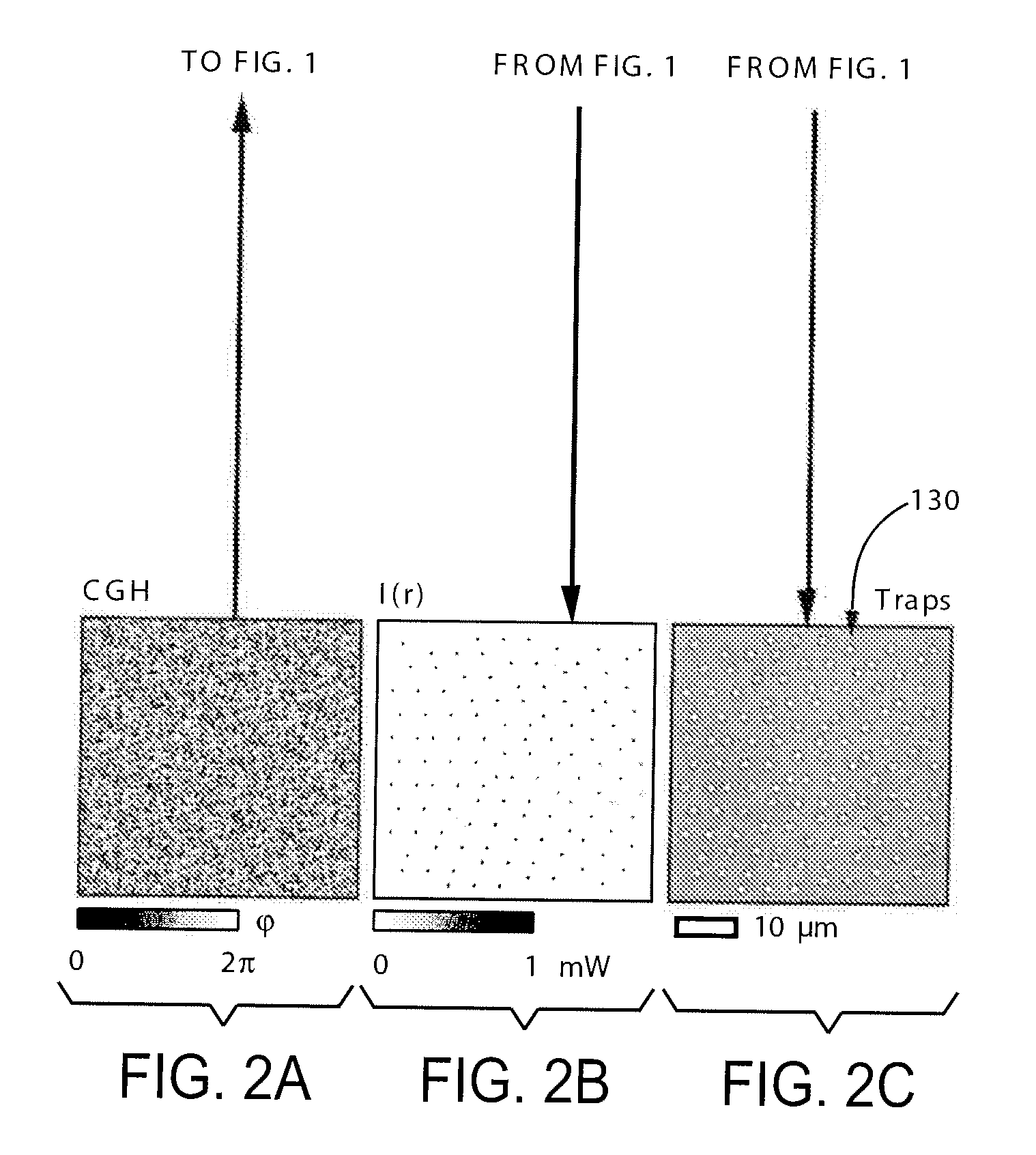Holographic microfabrication and characterization system for soft matter and biological systems
- Summary
- Abstract
- Description
- Claims
- Application Information
AI Technical Summary
Benefits of technology
Problems solved by technology
Method used
Image
Examples
Embodiment Construction
[0017]A system constructed in accordance with an embodiment of the invention is shown generally at 100 in FIG. 1. The system 100 uses a computer-designed diffractive optical element (DOE) 110 to split a single collimated laser beam 120 into multiple independent beams, each of which subsequently is focused into an optical trap or tweezers 130 (see FIG. 2C) preferably by a strongly converging objective lens 140 in FIG. 1. The DOE 110 preferably takes the form of a spatial light modulator (SLM) to create a computer-generated hologram (CGH) as shown in FIG. 2A. This CGH creates a plurality of light beams 125 in FIG. 2B specifically designed to create a particular pattern of the optical tweezers 130 (see FIG. 2C). Projecting a sequence of computer-designed holograms with an SLM reconfigures the projected traps 130, thereby translating trapped particles or manipulating objects along selected independent paths. The optical tweezer 130 is created in a conventional manner by bringing an inte...
PUM
 Login to View More
Login to View More Abstract
Description
Claims
Application Information
 Login to View More
Login to View More - R&D
- Intellectual Property
- Life Sciences
- Materials
- Tech Scout
- Unparalleled Data Quality
- Higher Quality Content
- 60% Fewer Hallucinations
Browse by: Latest US Patents, China's latest patents, Technical Efficacy Thesaurus, Application Domain, Technology Topic, Popular Technical Reports.
© 2025 PatSnap. All rights reserved.Legal|Privacy policy|Modern Slavery Act Transparency Statement|Sitemap|About US| Contact US: help@patsnap.com



